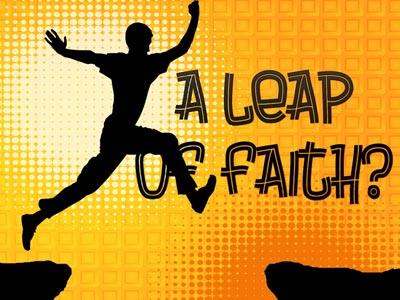-
Faith And Sight Series
Contributed by David Dunn on Oct 6, 2025 (message contributor)
Summary: The Father bridges the distance between word and reality—teaching us to believe before we see, then opening our eyes to worship Him fully.
Faith and Sight
(John 4 & John 9 — The Nobleman’s Son and the Man Born Blind)
---
Introduction — The Longest Distance in the World
Someone once said the longest distance in the world is only about eighteen inches — the space between the head and the heart.
I think there’s another long distance too: the stretch between what God says and when we finally see it happen.
That’s where faith lives.
It’s the hallway between promise and proof.
And John gives us two stories that face each other across that hallway — two men, two miracles, two kinds of distance.
One man’s child was dying miles away.
The other man’s eyes were closed right in front of him.
One believed before he saw.
The other saw before he fully believed.
Together they show us a Father who meets us wherever we are on the road between faith and sight.
---
1 The Father Who Speaks Across Distance
Picture a man riding hard up the road from Capernaum to Cana.
He’s a government official, used to giving orders.
But today he’s not the one in charge.
He’s a father with a feverish son and a heart that’s collapsing inside his chest.
He’s heard rumors about a Galilean rabbi who heals the sick.
So he does what desperate parents do — he goes.
He finds Jesus and blurts out,
> “Sir, come down before my little boy dies.”
He’s not asking for theology; he’s begging for travel.
But Jesus doesn’t pack a bag.
He just looks at the man and says one sentence — five words in Greek, three in English:
> “Go; your son lives.”
No touch, no visible proof, no guarantees.
Only a word.
And the next line may be one of the bravest in Scripture:
> “The man believed the word that Jesus spoke to him, and he went on his way.”
Imagine that walk home.
The sun’s dropping.
Every step is an argument between fear and faith.
What if nothing happened?
What if the fever spiked?
But each time doubt whispers, he repeats the phrase in his mind — “Your son lives.”
And something inside him steadies.
Halfway down the hill he sees his servants running toward him.
They’re waving, shouting, laughing.
“The fever broke! He’s alive!”
“When?” he asks.
“Yesterday, the seventh hour.”
He nods slowly.
That was the moment Jesus spoke.
The Father’s word traveled forty kilometers faster than panic.
Because divine authority doesn’t need to cross distance — it simply speaks, and creation rearranges itself to obey.
---
Reflection — Faith Before Sight
That’s what faith looks like.
It’s not closing your eyes and pretending; it’s opening your heart to what God has already said.
It’s walking the road home while the evidence is still invisible.
Some of us are halfway between Cana and Capernaum tonight — still waiting, still walking, still wondering.
You’ve prayed, and God’s answer came only as a sentence: “Go; your son lives. Go; your marriage will live. Go; your hope will live.”
You can’t see it yet, but the Word has already gone out ahead of you.
---
2 The Father Who Touches Through Darkness
Now turn the page several chapters forward.
This time there’s no nobleman, no palace, no journey.
Just a man sitting on the ground, begging.
He’s been blind since birth.
People pass by him every day and argue theology over his head.
“Rabbi,” the disciples ask, “who sinned—this man or his parents?”
Jesus shakes His head.
> “Neither. This happened so that the works of God might be displayed in him.”
Then He does something unexpected—something earthy, almost awkward.
He spits on the ground, kneads the dust into mud, and presses it on the man’s closed eyelids.
“Go,” He says, “wash in the pool of Siloam.”
Now picture this: a blind man feeling his way through the streets with mud on his face.
It’s humiliating. It’s messy. It’s hope in motion.
He reaches the pool, kneels down, scoops up the water, and rinses.
And light—light he’s never known—rushes in.
The first thing he sees is his own reflection trembling on the surface of the water.
A face he’s never met — his own.
---
Reflection — Sight Before Faith
But here’s the twist.
He can see, yet he doesn’t fully know who healed him.
When the neighbors drag him to the Pharisees, he says,
> “The man they call Jesus made clay and opened my eyes.”
Later he calls Him “a prophet.”
Still later, “a man from God.”
Only when Jesus finds him again does he truly see.
“Do you believe in the Son of Man?”
“Who is He, Lord, that I may believe?”
“You have both seen Him, and it is He who is speaking with you.”
Then the man says the simplest, truest prayer in the Gospel:

 Sermon Central
Sermon Central



